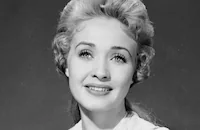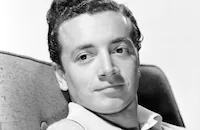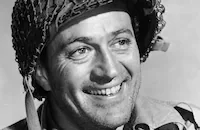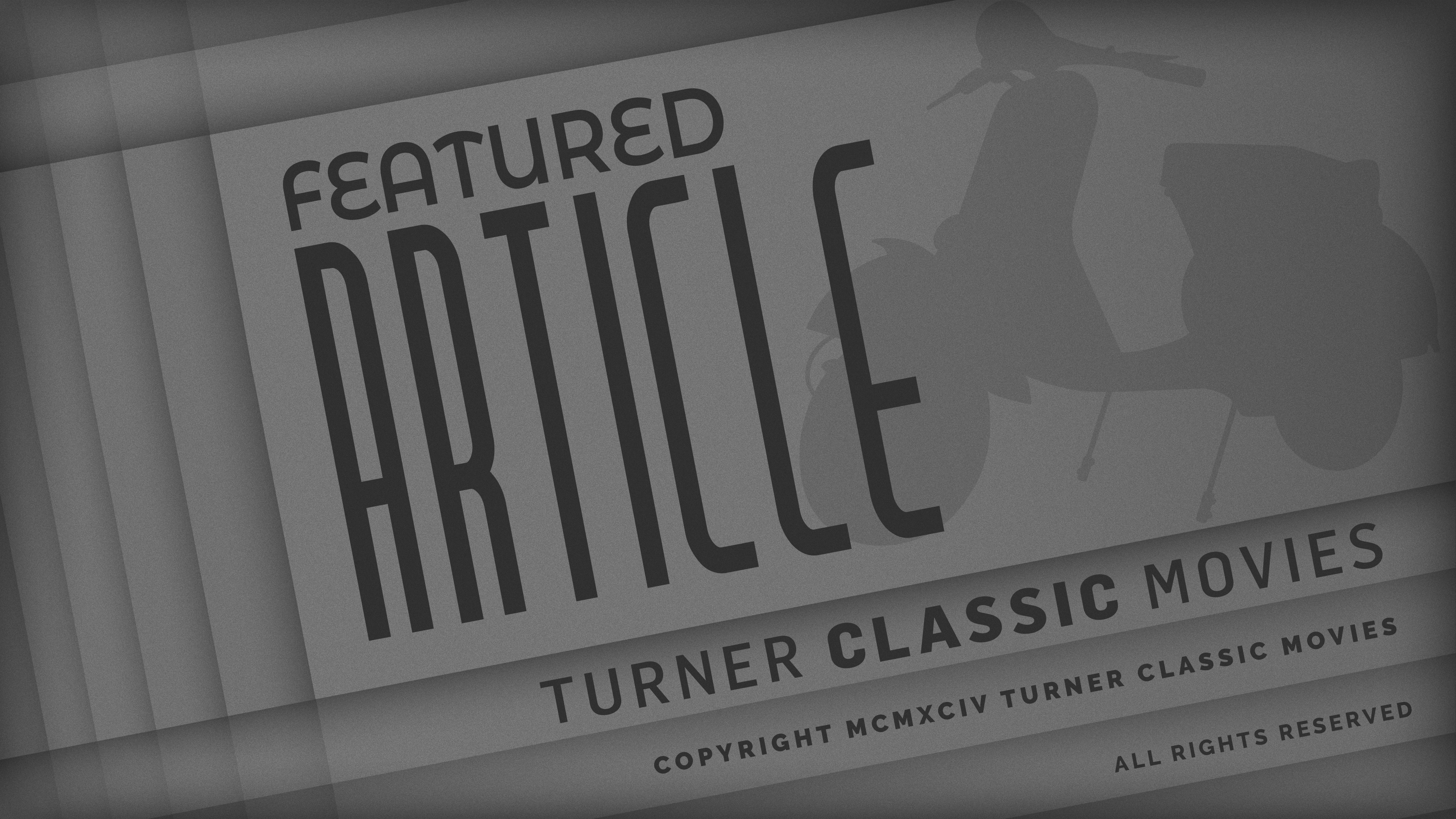Rich, Young and Pretty

Brief Synopsis
Cast & Crew
Norman Taurog
Jane Powell
Danielle Darrieux
Wendell Corey
Vic Damone
Fernando Lamas
Film Details
Technical Specs

Synopsis
When wealthy Texas rancher and statesman Jim Stauton Rogers is called to Paris on a United Nations matter, he reluctantly takes his grown daughter Elizabeth with him, fearful that she will encounter his long-estranged wife, singer Marie Devarone. Although Jim and his faithful housekeeper Glynnie try to shield Liz from press photographers, Marie sees their picture in the newspaper, and with the help of her partner, Paul Sarnac, plots to meet her daughter. That night, despite Jim's preference for all things Texan, he and Liz enjoy an evening out on the town. Back at the hotel, though, Jim becomes concerned after receiving a flower basket with a welcoming note from Marie.
Reading the card, Jim thinks back to his first trip to Paris in 1927: While attending an American Legion convention, Jim becomes attracted to Marie, who sings in a small club. They marry after a whirlwind courtship and Marie accompanies Jim to his small ranch in Texas. Although Jim is happy, he spends much of his time building up the ranch while Marie feels lonely and out of place. Liz's birth does not mitigate Marie's homesickness, and when Liz is two, Marie abruptly returns to France. Back in the present, before Jim leaves on a business trip to London with colleague Henri Milan, he warns Glynnie to keep Liz away from Marie. That afternoon, Liz has fun shopping with Henri's son Andre, a government clerk, who is immediately smitten with her. For reasons unknown to Liz or Andre, well-known French painter Claude Duval asks her to sit for a painting and she agrees. At Duval's studio, Marie, who is a good friend of the artist, secretly watches her lovely daughter and asks Duval to invite Liz to the nightclub "La Parisienne" that night. Marie arranges a sumptuous feast for Liz and Andre, who are overwhelmed by the service they receive from Jean, the ingratiating maitre d'. Marie yearns to talk with Liz, but cannot reveal herself because Liz believes that her mother died when she was a baby. Paul, who is in love with Marie, suggests that she introduce herself as a friend of Andre's father.
After Paul and Marie's performance, she goes to Liz and Andre's table and chats for a while, then invites them to meet her for tea at Duval's studio the next day. Liz is flattered by the sophisticated Marie's interest in her and readily agrees. At the end of the evening, Jim calls Liz from London. He is pleased that she has been out with Andre, but when Liz casually mentions meeting Marie, Jim decides to return to Paris as soon as possible. The next afternoon, Marie and Liz have another warm conversation and Marie invites her to return to La Parisienne that evening. When Jim arrives at his Paris hotel, he questions Andre about Marie while Liz is out of the room, but Andre is only interested in asking for Liz's hand in marriage. A rather preoccupied Jim agrees to talk with Liz, but discourages Andre because Liz has a boyfriend, Bob Lennart, back in Texas. After Andre leaves, Jim gets into an argument with Liz and forbids her to see Marie again. The confused Liz balks at his order and determines to keep her engagement. That evening, Jim goes alone to La Parisienne to convince Marie not to see Liz again, but while they are talking, Liz and Andre arrive. Because Jim is also concerned over Liz and Andre's relationship, Marie offers to see if their love is real. After Jim leaves, Marie confides in Paul that she thinks Liz would be making a mistake to marry Andre because of the same cultural differences that came between her and Jim.
The next morning, when a determined Liz tells Jim that she and Andre, whose proposal she has accepted, will be meeting Marie for lunch, Jim encourages the meeting. At lunch, Marie tries to show Andre and Liz the differences that separate them, such as where each wants to live. The couple begin to argue, after which they break the engagement. Later, at the hotel, a tearful Liz hears that Andre has left Paris and asks Jim if they can return to Texas right away. Jim arranges for a flight that night, but before they leave, Liz goes to La Parisienne to say goodbye to Marie. Seeing Liz's unhappiness, Marie realizes that Liz truly loves Andre and determines to get them back together. Marie asks Liz to wait in her dressing room during the floorshow, then discovers Andre sitting in the club. She then tells Andre to wait in Paul's dressing room, which is next to hers. Meanwhile, Jim fears they will miss their plane and calls Marie's dressing room. When Liz answers the phone, Andre hears her voice and goes to her to admit how much he loves her. When Jim arrives at the nightclub, Marie takes him to Paul's dressing room and tells him that Liz and Andre really are in love. Liz and Andre overhear them and Liz learns that Marie is her mother. Jim, who does not know what Liz has heard, gives her and Andre his blessing, suggesting that they divide their time between France and America and promising to let her in on a big surprise after Marie finishes her number.

Director

Norman Taurog
Cast

Jane Powell

Danielle Darrieux

Wendell Corey

Vic Damone

Fernando Lamas
Marcel Dario

Una Merkel

Richard Anderson
Jean Murat
Duci Dekerekjarto

Hans Conried
George And Katrin Tatar
Monique Chantal
"four Freshmen" Quartette
Ann Codee
Les Clark
Jack Harmon
Ward Ellis
Jack Regas
Ray Weamer
Alex Goudovitch
Gordon Clark
Stanley Blystone
Gil Herman
Peter Camlin
Arthur Gould-porter
Frank Arnold
Jean Del Val

Don Haggerty
Andre Charlot
Matt Moore
Claude Cariguel
Manuel Paris
Felix Wayne
George Davis
George Dee
Albert Pollet
Victor Desny
Jack Chefe
Nico Lek
Michele Lange
Ann Howard
Frank Hyers
Jack Shea
Wayne Tredway

Roger Moore
Paul Power
Beatrice Gray
Lynn Farr
Reed Howes
Jack Harden
Louis Laurent
Ray Paige
Jeanne Lafayette
Maya Van Horn
George Meader
Al Thompson
Theodore Kompanetz
Alphonse Martell
Andre Charise
Charles Andre
Paul De Corday
George Tay
Tom Hearn
Gladys Holland
Frank Sully
Crew
Peter Ballbusch
Nicholas Brodszky
Sammy Cahn
Nick Castle
Cy Coben
Dorothy Cooper
Dorothy Cooper
Stanley Donen
Cedric Gibbons
James Gooch
Jack Greenwood
Sydney Guilaroff
June Hersey
Henri Jaffa
Lee Katz
Arthur Lonergan
Jack Meskill
Jack D. Moore
Warren Newcombe
Joe Pasternak
Robert Planck
Harry Rickman
David Rose
Helen Rose
Gene Ruggiero
Douglas Shearer
Sidney Sheldon
Don Swander
William Tuttle
Maurice Vandair
Pete Wendling
Edwin B. Willis

Videos
Trailer
Hosted Intro
Film Details
Technical Specs

Award Nominations
Best Song
Articles
Rich, Young and Pretty
Though she was Rich, Young and Pretty on screen, off screen Powell felt sick and bloated. She had found out she was pregnant, after a year of trying with husband Geary Anthony Steffen, Jr., during the final days of shooting on Royal Wedding. The studio couldn't postpone her next film, so she had to work through morning sickness as cinematographer Robert Planck shot around her expanding waistline. Morning sickness quickly became a 24-hour ordeal. Pregnancy for Powell meant months of sickness, a situation that would recur with her other children. It was particularly hard for her to get through one number, "How Do You Like Your Eggs in the Morning," when the last thing she wanted to think about was food. Eventually, she became so sick she couldn't drive, and MGM had to send a car to pick her up each morning.
Although she was happy to be pregnant, she also had another cause for concern. After years of younger roles, she had hoped that Royal Wedding would convince the studio to move her into more mature stories. Instead, at 22 the expectant mother was still playing a young girl innocently devoted to her father until she tastes her first real love. She wouldn't get another adult role until she was cast as Howard Keel's frontier bride in Seven Brides for Seven Brothers (1954). Ironically, she would get her best reviews playing more mature characters, suggesting that there was much more to her acting talents than MGM's executives were willing to admit.
Of course, juvenalia was producer Joe Pasternak's stock in trade. He had first made his name in Hollywood producing a series of musicals starring child soprano Deanna Durbin that had saved Universal Pictures from bankruptcy. He had come to MGM in the '40s to help them make another young singer, Kathryn Grayson into a star. When she grew up, he started crafting vehicles for Powell. Even director Norman Taurog was an expert on working with younger players. He had won an Oscar® directing his nephew, future MGM star Jackie Cooper, in Skippy (1931), then had gone on to work with the young Judy Garland, Grayson and Mickey Rooney. Only in the late '50s would he establish a new identity working with adult players, though even then he worked frequently with teen heartthrob Elvis Presley and comedian Jerry Lewis, whose humor verged on the infantile.
Pasternak proved his eye for talent with two casting coups on Rich, Young and Pretty. He cast singing idol Vic Damone to make his film debut as Powell's love interest, a role he had played briefly a few years earlier off-screen. The two stars had met when Powell was doing a singing engagement in New York. Over her mother's objections, he had taken her out for a night of dancing. The next morning, he had sent her a gold and ruby necklace. They wouldn't see each other again until Pasternak cast them together in this film.
Also making his MGM debut in Rich, Young and Pretty was Fernando Lamas, cast as Darrieux's lover. Although paired with the older woman on screen, he was actually just a few years older than Damone, the film's juvenile love interest. The Argentine Lamas was already an established star in Mexico when he decided to give Hollywood a try. MGM had signed him to a contract but didn't know what to do with him until Jose Iturbi, a frequent performer in their musicals, spotted him at a party and told Pasternak: "Joe, Joe! Here's a prize; a gaucho for the girls!" (from James Robert Parrish, The MGM Stock Company). Pasternak cast him in Rich, Young and Pretty, and the studio began molding him as a Latin lover.
For foreign film buffs the film offers a rare chance to see Darrieux in an American picture. She had become a star in her native France, particularly as Charles Boyer's doomed love interest in Mayerling (1936), an international success that led to her one U.S. film of the period, The Rage of Paris (1938). Returning to France, she scored a series of international hits. Just before returning to Hollywood, she burned up art-house screens in La Ronde (1950), a film that helped break down local censorship in the U.S.
Rich, Young and Pretty had success written all over it, as Powell's and Damone's fans lined up for tickets. The critics were relatively kind, appreciating the picture as a light-hearted way to display the cast's musical talents, though the New York Times dismissed it as "pretty as a picture postcard and just about as exciting." They were quick to point out Lamas' sex appeal and mature acting and vocal talents, while also noting Damone's screen potential. With the film's success, Powell's co-star was moved into more starring roles at MGM and encouraged to get a nose job.
In later years, the film would be singled out by feminist critics for its unrealistic depiction of women's lives and grouped with other juvenile romances that display a strange sexual tension between young women and their doting, often divorced or widowed fathers. In A Woman's View: How Hollywood Spoke to Women, 1930-1960, Jeanine Basinger calls it "a treatise on the horrors of womanhood." Although she acknowledges the film as a "charming, escapist musical...," she also points out that "the impeccably turned-out Powell, doted on by everyone, was a cruel role model for young women in the audience."
Producer: Joe Pasternak
Director: Norman Taurog
Screenplay: Sidney Sheldon, Dorothy Cooper
Based on a story by Sheldon
Cinematography: Robert Planck
Art Direction: Cedric Gibbons, Arthur Lonergan
Music: David Rose
Cast: Jane Powell (Elizabeth Rogers), Danielle Darrieux (Marie Devarone), Wendell Corey (Jim Stauton Rogers), Vic Damone (Andre Milan), Fernando Lamas (Paul Sarnac), Marcel Dalio (Claude Duval), Una Merkel (Glynnie), Richard Anderson (Bob Lennart), Hans Conried (Jean the Maitre D'), The Four Freshmen (Themselves).
C-96m. Closed captioning.
by Frank Miller

Rich, Young and Pretty
Quotes
Trivia
Notes
The film's working title was Welcome to Paris. According to a Hollywood Reporter news item, Marjorie Main was initially to be included in the cast. According to a Hollywood Reporter news item, director Stanley Donen filled in for Norman Taurog during retakes on a Vic Damone number because Taurog was working on The Stooge at Paramount (see below). Rich, Young and Pretty marked the American motion picture debut of Argentine actor and singer Fernando Lamas (1915-1982). Lamas made several popular films at M-G-M in the 1950s and went on to appear in numerous other films and television programs throughout the 1960s and 1970s.
The film also marked the motion picture debut of popular singer Vic Damone and the singing group "The Four Freshmen." The song "Wonder Why" was nominated for an Academy Award for Best Song, but the award was given to "In the Cool, Cool, Cool of the Evening" from the Paramount film Here Comes the Groom. As noted in the Time magazine review of the film, Rich, Young and Pretty was French actress Danielle Darrieux's first Hollywood film since the 1938 Universal picture The Rage of Paris (see AFI Catalog of Feature Films, 1931-40).
















